

others
Gold holds recovery move but eyes data for further policy action – Crypto News
- Gold price turns sideways after a solid recovery as investors await fresh triggers for further action.
- Fed’s Powell kept doors open for further policy tightening to ensure price stability.
- Fed’s Mester supports one more interest rate hike, though not necessarily in September.
Gold price (XAU/USD) turned lackluster after defending the critical support of $1,900.00 on Monday. The precious metal consolidates as investors prepare for crucial economic indicators such as Nonfarm Payrolls (NFP) and ISM Manufacturing PMI for August, which will be released later this week. The impact of August economic data will be very significant as Federal Reserve (Fed) Chair Jerome Powell reiterated at the Jackson Hole Symposium that further policy action will be data-dependent.
Jerome Powell at Jackson Hole said that the achievement of price stability has a long way to go. Powell kept doors open for further policy tightening if economic data continues to remain supportive. After Powell’s commentary, investors expect that the central bank could raise interest rates in November as a last nail in the coffin.
Daily Digest Market Movers: Gold price awaits US labor market data
- Gold price consolidates above $1,910.00 as investors digest the impact of the hawkish commentary from Fed Chair Jerome Powell at the Jackson Hole Symposium.
- Powell’s speech was very much in line with market expectations. The Fed’s chair confirmed that the central bank can raise interest rates further as the job of ensuring price stability has not been completed yet but promised that policymakers will remain very careful in upcoming policy meetings.
- Powell also emphasized that incoming data will be a major factor for further policy action.
- The central bank has evidence that inflation is getting more responsive to labor markets. Powell said that further signs of a tightening job market could warrant more Fed action.
- About achieving price stability, Jerome Powell said that “inflation remains too high, the process of bringing down inflation still has a long way to go, even with more favorable recent readings.”
- The precious metal could face some selling pressure as Cleveland Fed Bank President Loretta Mester said she supports one more interest rate hike, though not necessarily in September.
- As per the CME Group Fedwatch Tool, there is a more than 80% chance of the Fed keeping interest rates unchanged in September, while the majority of investors are betting on an interest-rate hike in November.
- Fed’s Mester said that, after being done with hiking rates, the central bank needs to hold rates for a while. The policymaker emphasized on achieving price stability by the end of 2025 and should not allow it to drift into 2026.
- About rate cut discussions, Fed Mester is in favor of re-evaluating it in the second half of 2024. She believes that the central bank has a good shot at attaining 2% inflation without damage to the real economy.
- Philadelphia Fed Bank President Patrick Harker supports holding interest rates steady as labor markets are cooling. Harker added that interest rates could be increased if inflation reaccelerates.
- As Jerome Powell talked about dependency on incoming data for further policy action, United States Nonfarm Payrolls (NFP) and ISM Manufacturing PMI data for August will remain in focus this week.
- US hiring has slowed down in the past few months, but the Unemployment Rate has remained at historic lows and wage growth has been strong.
- Factory activity has been contracting for the past nine straight months as US firms are operating at lower capacity due to a bleak demand outlook.
- Also, US firms are clearing their old inventories as expansion plans have been postponed due to higher borrowing costs.
- The US Dollar Index (DXY) remains supported around 104.00 and is expected to turn lackluster as investors prepare for crucial economic indicators.
Technical Analysis: Gold price oscillates above $1,910 post-recovery move
Gold price turns sideways around $1,915.00 after defending the crucial support of $1,900.00 as investors digest Powell’s hawkish commentary at the Jackson Hole Symposium. On a broader note, the precious metal is auctioning in a range of $1,904-$1,922 from Thursday. The yellow metal made two consecutive Spinning Top candlesticks, signaling indecisiveness among market participants. The precious metal regains territory above the 200-day Exponential Moving Average (EMA) at $1,907 but the 20-day EMA at $1,916 is still restricting its upside potential.
Central banks FAQs
Central Banks have a key mandate which is making sure that there is price stability in a country or region. Economies are constantly facing inflation or deflation when prices for certain goods and services are fluctuating. Constant rising prices for the same goods means inflation, constant lowered prices for the same goods means deflation. It is the task of the central bank to keep the demand in line by tweaking its policy rate. For the biggest central banks like the US Federal Reserve (Fed), the European Central Bank (ECB) or the Bank of England (BoE), the mandate is to keep inflation close to 2%.
A central bank has one important tool at its disposal to get inflation higher or lower, and that is by tweaking its benchmark policy rate, commonly known as interest rate. On pre-communicated moments, the central bank will issue a statement with its policy rate and provide additional reasoning on why it is either remaining or changing (cutting or hiking) it. Local banks will adjust their savings and lending rates accordingly, which in turn will make it either harder or easier for people to earn on their savings or for companies to take out loans and make investments in their businesses. When the central bank hikes interest rates substantially, this is called monetary tightening. When it is cutting its benchmark rate, it is called monetary easing.
A central bank is often politically independent. Members of the central bank policy board are passing through a series of panels and hearings before being appointed to a policy board seat. Each member in that board often has a certain conviction on how the central bank should control inflation and the subsequent monetary policy. Members that want a very loose monetary policy, with low rates and cheap lending, to boost the economy substantially while being content to see inflation slightly above 2%, are called ‘doves’. Members that rather want to see higher rates to reward savings and want to keep a lit on inflation at all time are called ‘hawks’ and will not rest until inflation is at or just below 2%.
Normally, there is a chairman or president who leads each meeting, needs to create a consensus between the hawks or doves and has his or her final say when it would come down to a vote split to avoid a 50-50 tie on whether the current policy should be adjusted. The chairman will deliver speeches which often can be followed live, where the current monetary stance and outlook is being communicated. A central bank will try to push forward its monetary policy without triggering violent swings in rates, equities, or its currency. All members of the central bank will channel their stance toward the markets in advance of a policy meeting event. A few days before a policy meeting takes place until the new policy has been communicated, members are forbidden to talk publicly. This is called the blackout period.
-
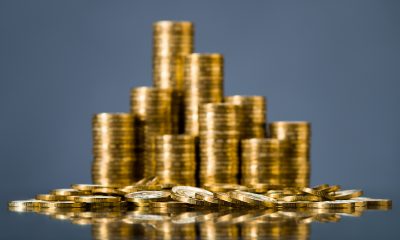
 Blockchain1 week ago
Blockchain1 week agoTokenized Deposits for Payments, Treasury – Crypto News
-

 Metaverse1 week ago
Metaverse1 week agoTech layoffs: From Meta, Amazon to Google — these IT majors have cut AI related jobs – Crypto News
-
Business1 week ago
XRP Price Classical Pattern Points to a Rebound as XRPR ETF Hits $100M Milestone – Crypto News
-
Technology1 week ago
$1.68 Trillion T. Rowe Price Files for First Active Crypto ETF Holding BTC, ETH, SOL, and XRP – Crypto News
-
Cryptocurrency1 week ago
Robinhood Lists HYPE As Hyperliquid Flips Aster, Lighter In Perp DEX Volume – Crypto News
-

 Metaverse1 week ago
Metaverse1 week agoBezos fund believes AI can save the planet. Nvidia, Google are all-in. – Crypto News
-
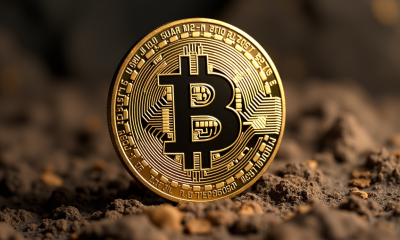
 Cryptocurrency1 week ago
Cryptocurrency1 week agoCrypto update: Bitcoin and Ethereum are stable as market’s focus shifts to US inflation data – Crypto News
-
Cryptocurrency1 week ago
XRP News: Ripple Unveils ‘Ripple Prime’ After Closing $1.25B Hidden Road Deal – Crypto News
-

 Cryptocurrency7 days ago
Cryptocurrency7 days agoTrump plans to pick Michael Selig to lead CFTC: Report – Crypto News
-
Business7 days ago
White House Crypto Czar Backs Michael Selig as ‘Excellent Choice’ To Lead CFTC – Crypto News
-
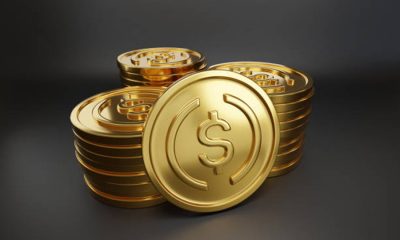
 Blockchain6 days ago
Blockchain6 days agoBinance Stablecoin Outflow On A Steady Rise — What This Means For The Market – Crypto News
-
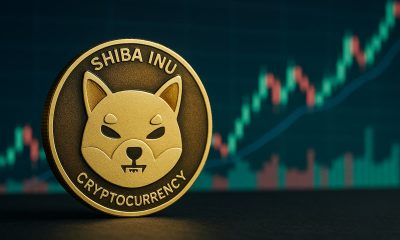
 Blockchain1 week ago
Blockchain1 week agoHere’s Why The Shiba Inu Price Could Bottom And Rise Another 40% – Crypto News
-

 Technology1 week ago
Technology1 week agoChatGPT down: Thousands of users unable to access AI chatbot, OpenAI says it is working on a fix – Crypto News
-
Business1 week ago
Breaking: Trump To Meet China’s President On October 30, Bitcoin Bounces – Crypto News
-

 Blockchain7 days ago
Blockchain7 days agoAfrica Countries Pass Crypto Laws to Attract Industry – Crypto News
-
others6 days ago
JPY soft and underperforming G10 in quiet trade – Scotiabank – Crypto News
-

 De-fi6 days ago
De-fi6 days agoNearly Half of US Retail Crypto Holders Haven’t Earned Yield: MoreMarkets – Crypto News
-
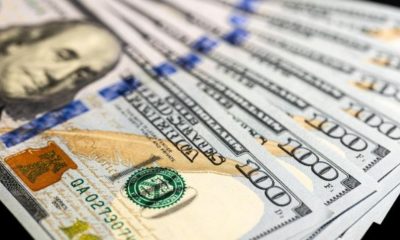
 Cryptocurrency5 days ago
Cryptocurrency5 days agoUSDJPY Forecast: The Dollar’s Winning Streak Why New Highs Could Be At Hand – Crypto News
-
Business1 week ago
How the Crypto Market Could React to the Next Fed Meeting on October 29? – Crypto News
-

 Cryptocurrency1 week ago
Cryptocurrency1 week ago155 Filings Across 35 Assets, Analyst Backs Index Funds – Crypto News
-

 Technology1 week ago
Technology1 week agoSundar Pichai hails ‘verifiable’ quantum computing breakthrough as Google’s Willow surpasses ability of supercomputers – Crypto News
-

 Technology1 week ago
Technology1 week ago‘It just freezes’: Spotify users fume over app crashes on Android devices, company responds – Crypto News
-
others1 week ago
JPY weak and underperforming – Scotiabank – Crypto News
-

 Cryptocurrency1 week ago
Cryptocurrency1 week agoDOGE to $0.33 in Sight? Dogecoin Must Defend This Key Level First – Crypto News
-

 Blockchain7 days ago
Blockchain7 days agoISM Data Hints Bitcoin Cycle Could Last Longer Than Usual – Crypto News
-

 Technology6 days ago
Technology6 days agoNothing OS 4.0 Beta introduces pre-installed apps to Phone (3a) series: Co-founder Akis Evangelidis explains the update – Crypto News
-

 Blockchain6 days ago
Blockchain6 days agoEntire Startup Lifecycle to Move Onchain – Crypto News
-

 De-fi6 days ago
De-fi6 days agoHYPE Jumps 10% as Robinhood Announces Spot Listing – Crypto News
-
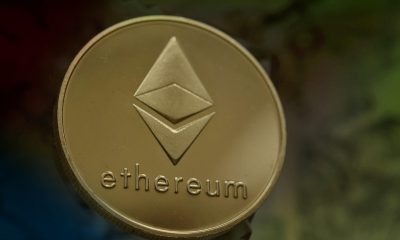
 Blockchain6 days ago
Blockchain6 days agoEthereum Rebounds From Bull Market Support: Can It Conquer The ‘Golden Pocket’ Next? – Crypto News
-
others6 days ago
Platinum price recovers from setback – Commerzbank – Crypto News
-
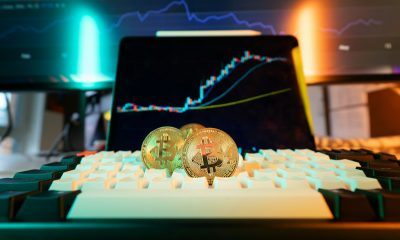
 Blockchain5 days ago
Blockchain5 days agoXRP/BTC Retests 6-Year Breakout Trendline, Analyst Calls For Decoupling – Crypto News
-

 Technology5 days ago
Technology5 days agoSurvival instinct? New study says some leading AI models won’t let themselves be shut down – Crypto News
-

 Cryptocurrency5 days ago
Cryptocurrency5 days agoWestern Union eyes stablecoin rails in pursuit of a ‘super app’ vision – Crypto News
-
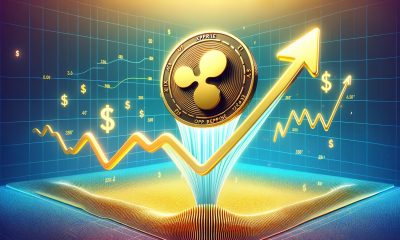
 Blockchain5 days ago
Blockchain5 days agoXRP Price Gains Traction — Buyers Pile In Ahead Of Key Technical Breakout – Crypto News
-
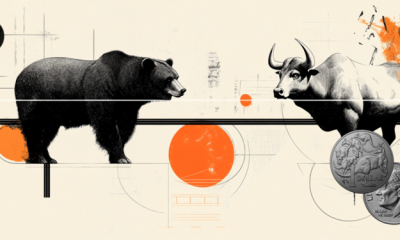
 others1 week ago
others1 week agoLikely to trade in a range between 0.6470 and 0.651 – UOB Group – Crypto News
-

 Blockchain1 week ago
Blockchain1 week agoBinance expands global crypto access with new USD transfer feature – Crypto News
-
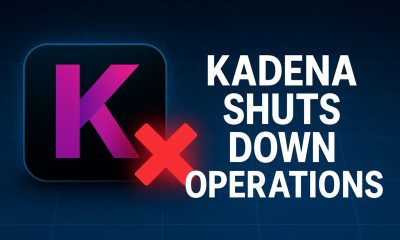
 Blockchain1 week ago
Blockchain1 week agoKadena Shuts Down Operations – Team Confirms Immediate Cease Of All Activities – Crypto News
-

 Technology1 week ago
Technology1 week agoYouTube brings a new feature to stop you from endlessly scrolling Shorts: here’s how it works – Crypto News
-

 Technology1 week ago
Technology1 week agoSolana’s RWA market surpasses $700M all-time high as adoption accelerates – Crypto News
-

 Cryptocurrency1 week ago
Cryptocurrency1 week agoJito’s JTO token rises on a16z’s $50 million investment in Solana staking protocol – Crypto News
-
Technology1 week ago
Dogecoin Price Crash Looms as Flag, Death Cross, Falling DOGE ETF Inflows Coincide – Crypto News
-

 De-fi1 week ago
De-fi1 week agoSolana DEX Meteora Launches Native MET Token – Crypto News
-

 Technology1 week ago
Technology1 week agoGoogle and Apple face extra UK scrutiny over strategic role in mobile platforms – Crypto News
-

 Cryptocurrency1 week ago
Cryptocurrency1 week agoLedger Nano Gen5 feels like Flex for less – Crypto News
-

 De-fi1 week ago
De-fi1 week agoAster Rallies on ‘Rocket Launch’ Incentives Campaign – Crypto News
-

 Blockchain1 week ago
Blockchain1 week agoBitcoin Whale From 2009 Moves Coins After 14 Years Asleep – Crypto News
-

 Cryptocurrency1 week ago
Cryptocurrency1 week agoFetch.ai and Ocean Protocol move toward resolving $120M FET dispute – Crypto News
-

 Technology1 week ago
Technology1 week agoOpenAI announces major Sora update: Editing, trending cameos, and Android launch on the way – Crypto News
-
Business1 week ago
HBAR Price Targets 50% Jump as Hedera Unleashes Massive Staking Move – Crypto News
-
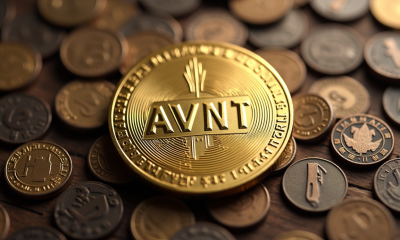
 Cryptocurrency1 week ago
Cryptocurrency1 week agoWhat next for Avantis price after the 73% recovery? – Crypto News






